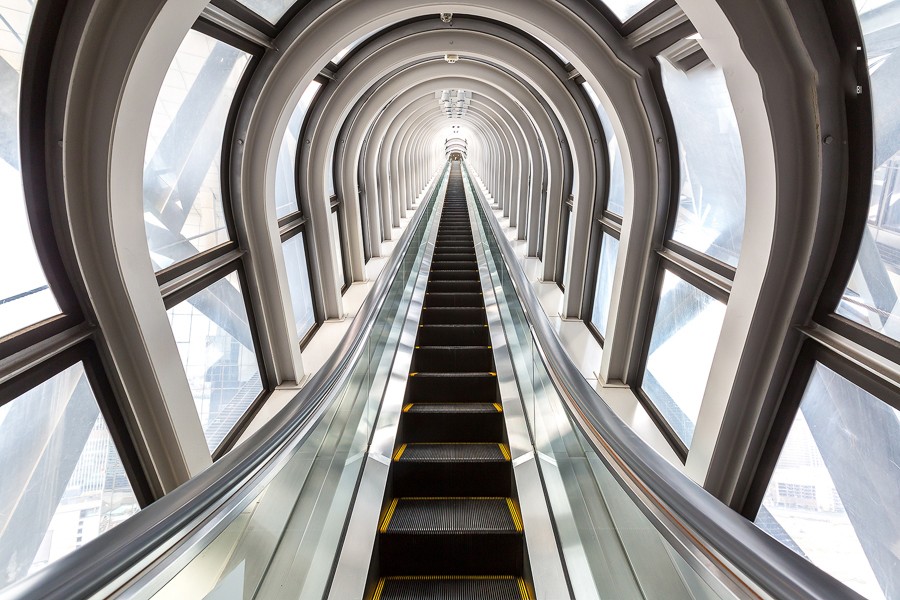Escalators are a type of vertical transportation device used to transport people between different floors in buildings, especially in high-traffic areas such as shopping malls, airports, metro stations, and hotels.
How do they work?
Escalators consist of a series of interconnected moving steps that rotate around a closed track. These steps are driven by an electric motor, allowing them to move continuously up or down. The steps are typically flat at the entry and exit points to facilitate ascent and descent, gradually forming stepped steps as they move.
Importance and Advantages:
Efficiency: They can move large numbers of people continuously, reducing congestion.
Convenience: They provide a convenient means of moving between floors without requiring significant physical effort.
Space Saving: They take up less space than elevators when transporting large numbers.
Safety: They are equipped with numerous safety features such as emergency stop buttons and safety sensors to prevent accidents.
Continuity: They do not stop operation in the event of a sudden power outage, just like elevators (they transform into a fixed staircase).
Potential drawbacks:
They are not suitable for transporting people with disabilities who use wheelchairs or large strollers.
They require regular maintenance to ensure safe operation.
In short, escalators are an effective and practical solution for mass transportation within large buildings, and they play a vital role in facilitating traffic flow and providing convenience to the public.

